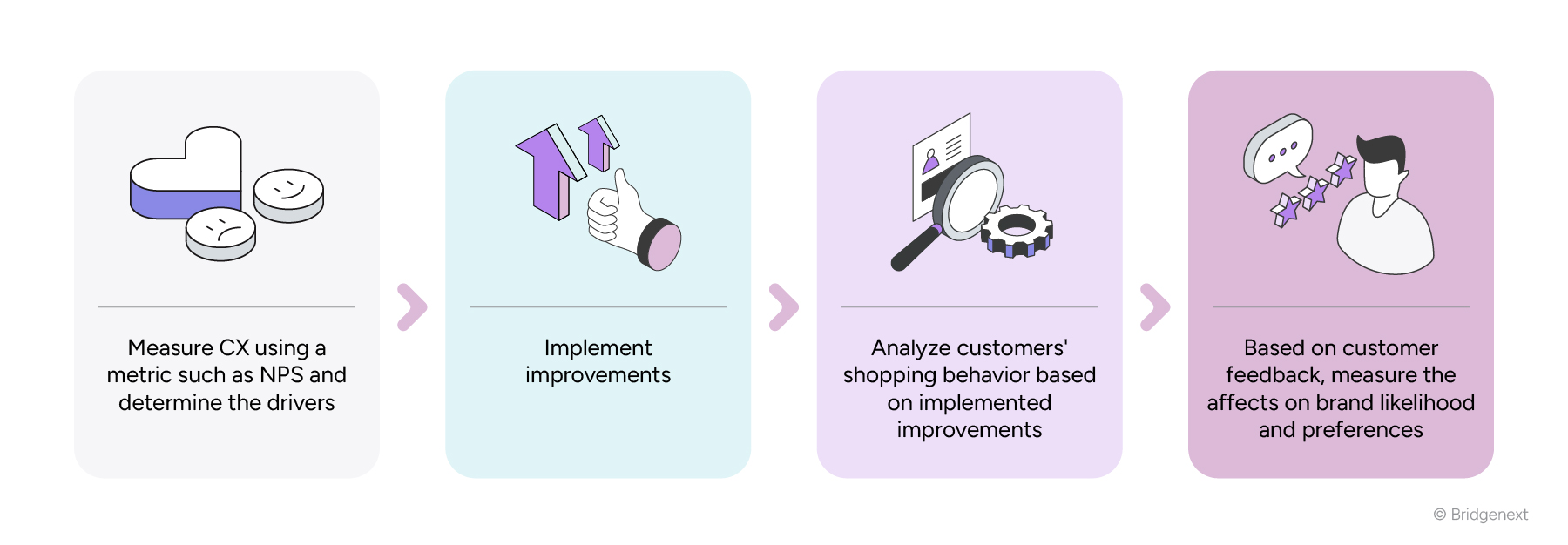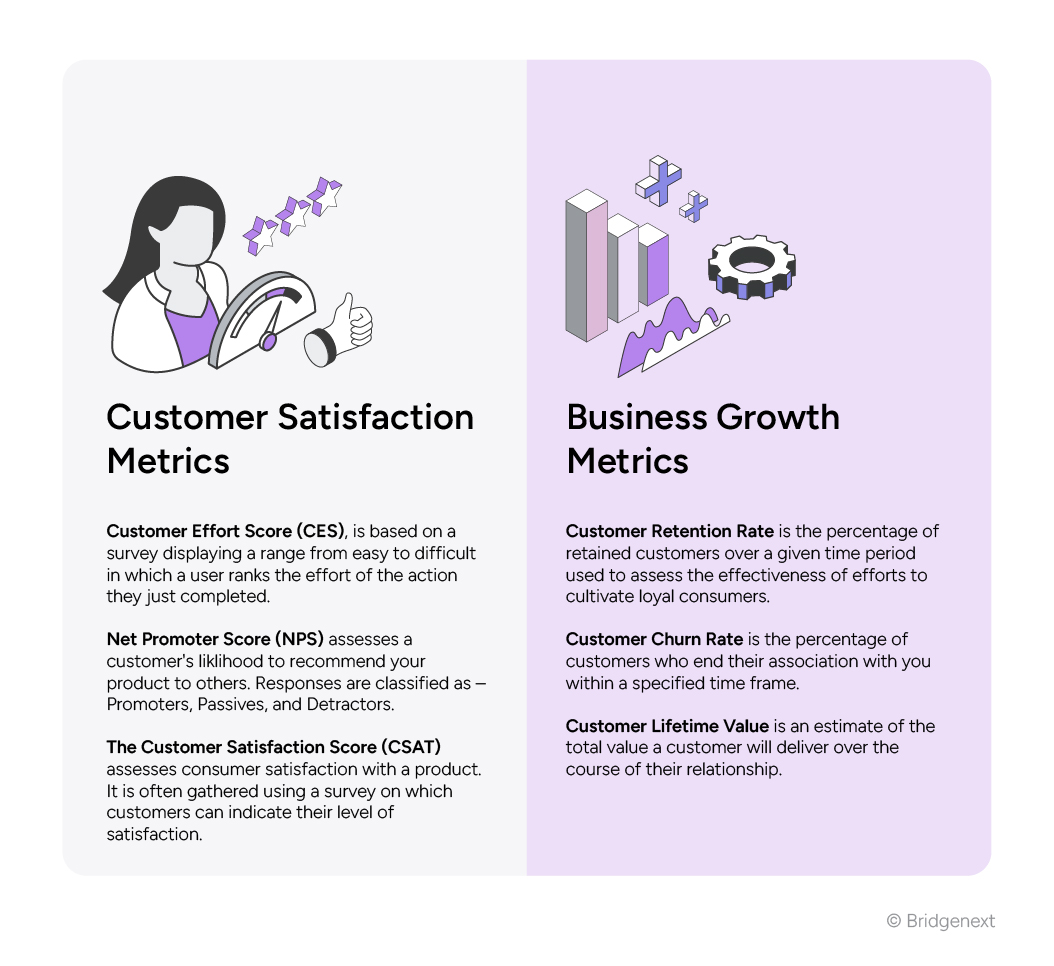Calculating Return on Experience (ROX) in retail is essential for gauging the true impact of customer interactions on business success. Monitoring ROX metrics allows retailers to move beyond traditional ROI measures. Read on to understand the nuanced complexities of customer experience ROI.
Introduction
As Retail and Consumer Packaged Goods (CPG) companies seek to realize business-aligned results from their digital transformation efforts, they need to focus on initiatives that enhance their overall customer experience. Each company’s roadmap is different, and their goals may be focused on one or more of the following:
- Omnichannel experiences
- Loyalty programs
- Personalized marketing strategies
- Innovative packaging
- Sustainable practices
- Customer service enhancements
While these initiatives encompass various strategies, from optimizing online platforms and e-commerce capabilities to leveraging data analytics for targeted marketing and personalized offerings, they share the same goal: to create seamless, engaging, memorable experiences that resonate with today’s digitally savvy consumers.
Although these programs certainly have merit, it can become challenging to quantify the impact of these digital investments on customer experience and, ultimately, on business outcomes. This is where the concept of Return on Experience (ROX) comes into play. By measuring ROX, retail, and CPG companies can evaluate the effectiveness of their digital initiatives in delivering meaningful experiences, building brand loyalty, and driving revenue growth. Understanding this metric is an important exercise, especially considering these stats:
- Customer-centric businesses are 60% more profitable than those not focusing on customers.
- Brands with outstanding customer experience generate 5.7 times more revenue than competitors with subpar customer experience.
- 84% of businesses that improve their customer experience see increased revenue.
– Forbes
This blog delves into how measuring Return on Experience (ROX) can provide actionable insights to optimize your digital investments for customer experience excellence. But first, let’s understand why businesses should assess their Return on Experience.
How ROX Completes Retail’s ROI Picture
Customer experience encompasses all interactions, impressions, and emotions with a brand. It includes every touchpoint, from browsing a website and comparing offerings in the store to purchasing the chosen product to contacting customer service. By valuing customer experience, companies can gauge how further investments in CX projects improve brand perception, loyalty, and customer lifetime value over time. Measuring a retail business’s Return on Experience (ROX) is compelling for several reasons. By measuring ROX, retailers can:
- Pinpoint which aspects of the customer journey contribute most to loyalty and prioritize efforts to enhance those experiences, leading to higher customer retention and lifetime value.
- Improve store layouts, train staff, implement new technologies, and refine marketing strategies by allocating resources more effectively.
- Surface actionable data based on customer feedback, sentiment, and behavior to continuously optimize operations, product offerings, and overall customer satisfaction.
Successfully charting the Return on Experience (ROX) can deliver significant gains for a business. But, calculating ROX is not as straightforward as calculating ROI, and it can take months, if not years, to see results:

According to the Harvard Business Review, business leaders increase revenue by making CX a core focus area of their strategy:
Superior CX can increase profits by 7%, and another revealed that customers who have great experiences spend far more with brands than their peers.
– Harvard Business Review
Even though specific ROX benefits may appear intangible, they impact key business indicators ranging from CAC (client acquisition cost) to AOV (average order value). Return on Experience (ROX) is a progress indicator derived from several essential measures. Business leaders must monitor these indicators to acquire rapid insights into CX initiatives.
The Experience Metrics of a ROX Equation
Calculating Return on Experience (ROX) in the retail industry typically involves measuring the impact of customer experience on various key metrics. Since customer experience is multifaceted, there isn’t a standard formula, so it’s necessary to understand the key metrics first. We recommend measuring customer experience using two primary metrics: Customer Satisfaction and Business Growth.

Once you have identified the key metrics applicable to your company, you can collect data from various touchpoints, such as surveys, feedback forms, social media, online reviews, and sales data. Calculating values for your key metrics individually will help you determine your business’ ROX score. These calculations disqualify common misconceptions regarding the ROX assessment in the retail industry, such as:
- ROX is solely based on customer satisfaction
- ROX is a one-time calculation
- ROX can only be measured using single metrics
- ROX is only for customers facing interactions
- ROX can’t be quantified
Conclusion
Calculating Return on Experience (ROX) in the retail industry goes beyond simplistic metrics and standard benchmarks. It involves a nuanced understanding of customer interactions, brand perceptions, and business outcomes. It’s important to dispel common misconceptions, such as equating ROX with Return on Investment (ROI) or that a high ROX guarantees immediate financial gains. By understanding the complexities of ROX measurement and using it as a metric to understand the impacts of investment in CX over time, retailers can realize the full potential of their digital transformation efforts and stay competitive in the dynamic retail landscape.
To convert the concept of ROX into actionable business strategies, decision-makers should take the following steps:
- Understand ROX’s value and nuances and secure top executives’ support by presenting case studies and data showcasing the long-term benefits of focusing on customer experience (CX).
- Identify the specific ROX metrics that matter to their business, then map out the entire customer journey to pinpoint key touchpoints and potential areas for improvement that directly affect those metrics.
- Establish continuous feedback loops through surveys, social media listening, and direct customer interactions to improve the customer experience iteratively.
- Ensure all departments (marketing, sales, customer service, IT, etc.) are aligned with the ROX objectives and develop shared KPIs that reflect the ROX goals across different departments.
- Review performance regularly against the established ROX metrics and be flexible and ready to adjust strategies based on customer behavior and satisfaction data.
How Bridgenext Can Help
Your company needs a comprehensive data strategy to effectively calculate Return on Experience (ROX). Bridgenext partners with clients to strategically leverage smart enterprise data analytics for revenue growth and innovation. Let us help you navigate big data complexities and fetch intelligent insights at every stage of your data value chain. From redefining your data collection strategies to unlocking new revenue streams, we’ll make the most of your data investments.
References
www.forbes.com/sites/blakemorgan/2020/09/07/how-to-prove-the-roi-of-customer-experience/?sh=680ddc1167f4
www.salesforce.com/blog/calculating-return-on-experience-rox/
www.salesforce.com/blog/18-rox-marketing-measures/
www2.deloitte.com/content/dam/Deloitte/us/Documents/consumer-business/us-consumer-business-retail-outlook-2024.pdf



